CollectA’s catalogue is starting to accumulate large-scale pterosaur figures, beginning in 2015 with their Guidraco. The latest installment in their Supreme pterosaur lineup is the very large, very pretty Caiuajara. Caiuajara is a solid choice for a pterosaur to make into a figure. It isn’t known from any complete, articulated specimens, but it is known from a bone bed representing scattered pieces of at least four dozen individual animals from different growth stages and of both sexes.

Based on the shape of the crest, this figure evidently represents a large adult male. If you have a Tapejara toy, the head shape might look familiar, although your toy is almost certainly based on Tupandactylus, a separate genus whose type species, T. imperator, was for a time included in the genus Tapejara. Caiuajara is a close relative of Tupandactylus, but lived during a later stage of the Cretaceous period. The crests were quite similar in basic form, and this individual is painted with an elaborate eyespot pattern in red, yellow, blue, and black, echoing the showy bills and casques of toucans or hornbills. The design, while surely flamboyant, is far from impossible. Blues are comparatively rare in bird bills, but some toucans manage to incorporate it. The rest of the body is black and white, with yellow hands and feet, which is also similar to some toucan species.
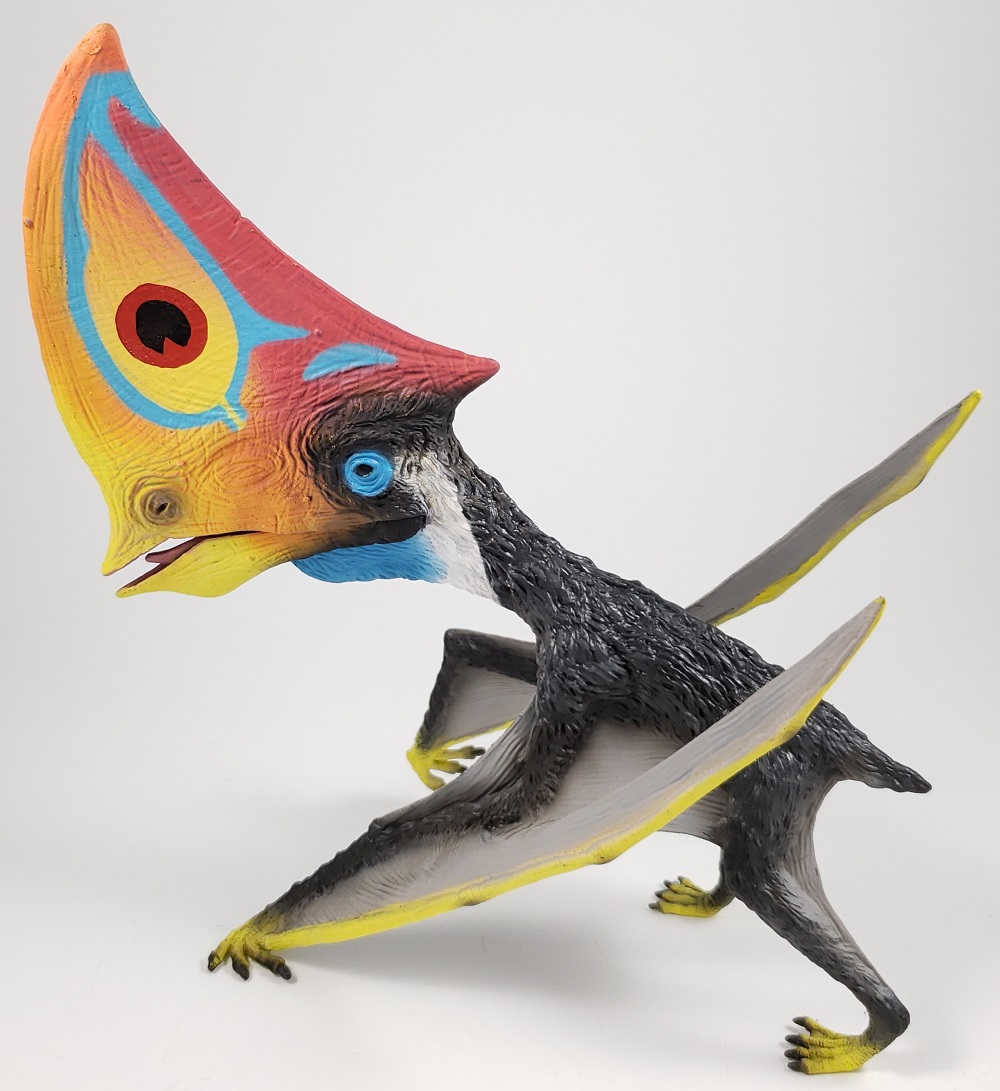
The head features some blue around the eye and at the throat. Blue coloration in animals is nearly always structural (based on scattering light at specific angles) rather than pigment-based. It’s relatively easy for skin or feathers, which are complex, to have the right light-interference properties. It’s not clear to me that simple pycnofibers–the hairlike covering of pterosaurs–were up to that challenge, but there could easily be evidence in favor of it that I have overlooked. I tend to believe that the blue on the throat’s pycnofibers is unlikely, but that’s a really minor quibble.
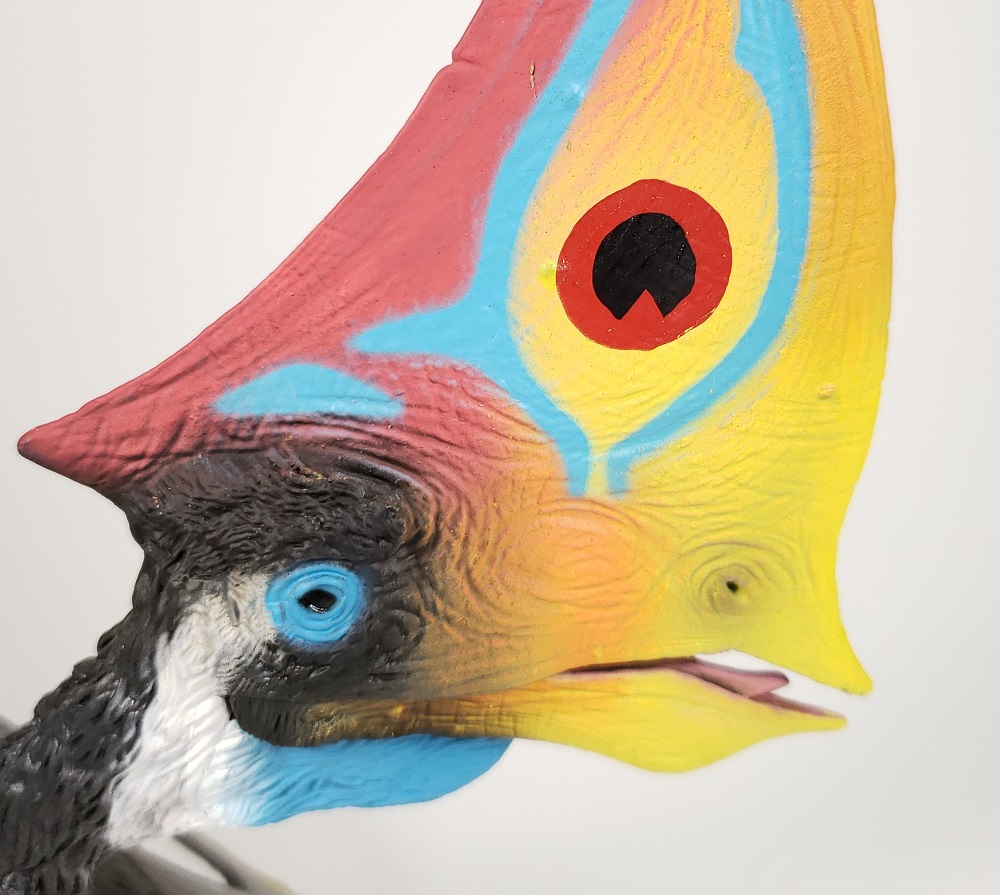
The jaw is articulated, although its range of motion is limited enough that it feels a little pointless. There’s decent detailing of the tongue and roof of the mouth, but it isn’t so intricate that it needed to be a separate piece to accomplish.
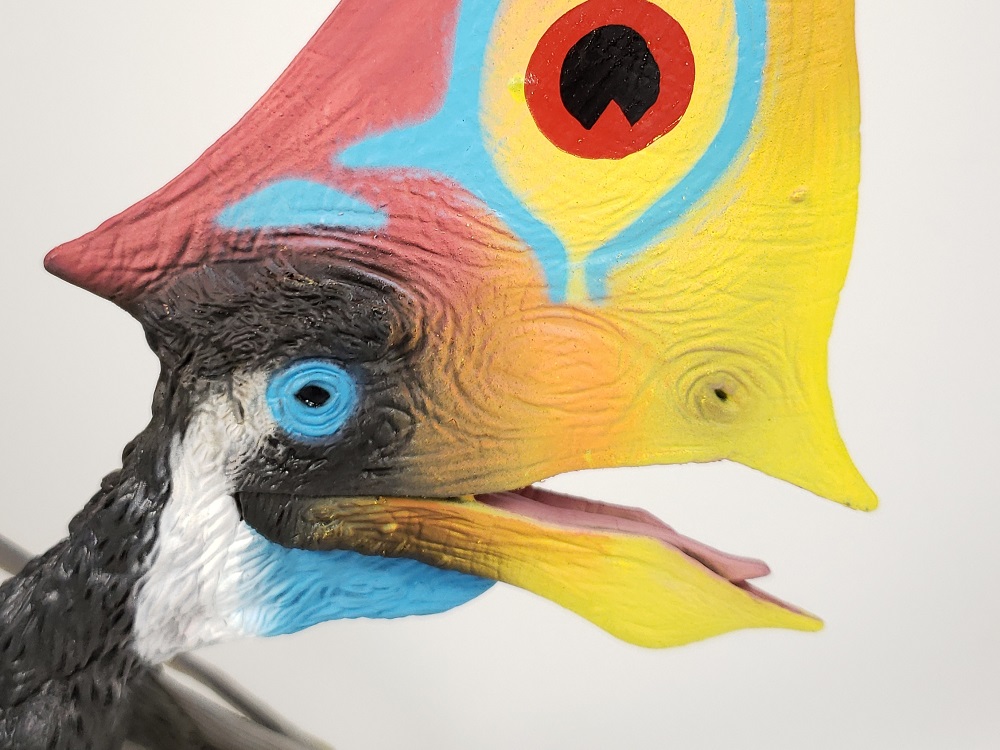
The articulated jaw does make it easier for the figure to grasp prey, however.
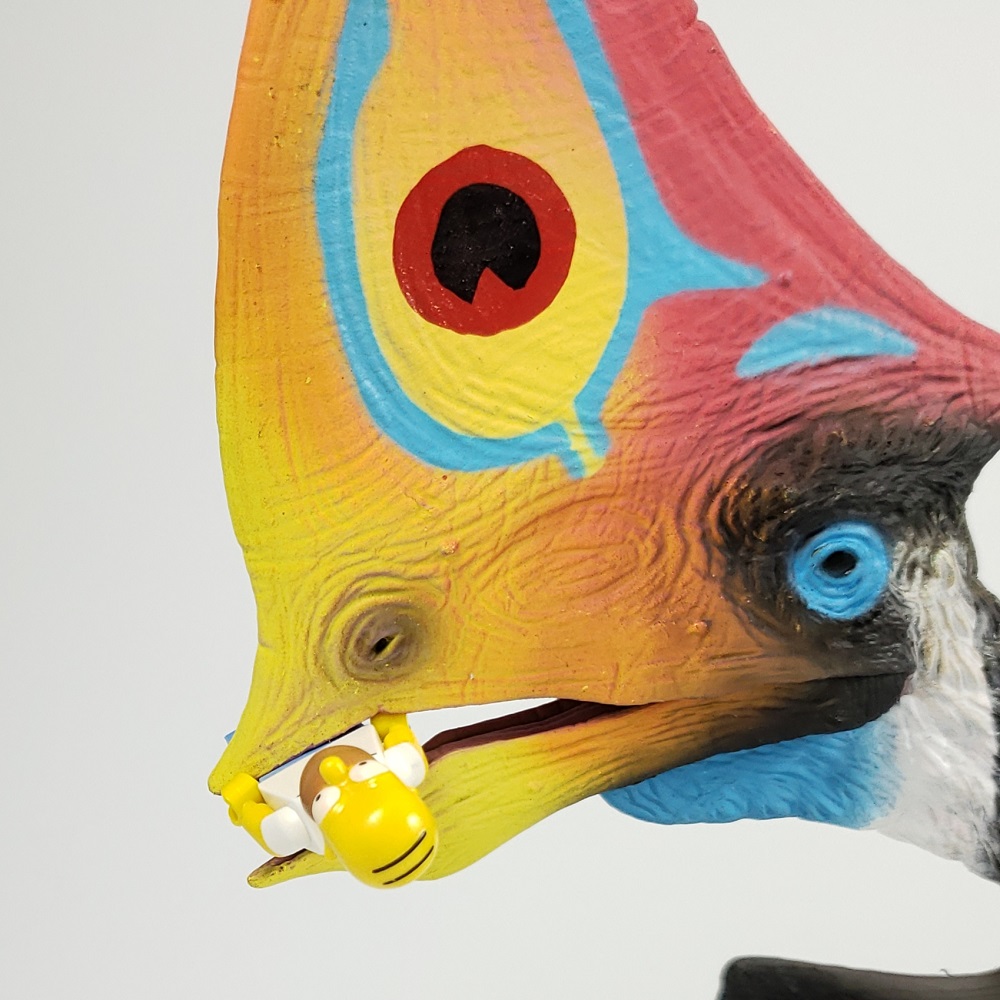
The wings look pretty good, with all the major components present. The leading edge incorporates the pteroid (a wrist bone unique to pterosaurs that probably helped to control its shape), although it is easier to feel it than see it, as it’s painted the same gray as the membrane. Another narrow membrane runs along the backs of the legs. The main wing membrane (brachiopatagium) attaches at the thigh and includes textures to indicate both folding and tissues that gave the membrane structure (actinofibrils). It must be tremendously difficult to sculpt a folded wing membrane, not knowing exactly how elastic it might have been and how squishy parts shifted relative to one another. These membranes are decent, though not the best I’ve seen on a pterosaur model.
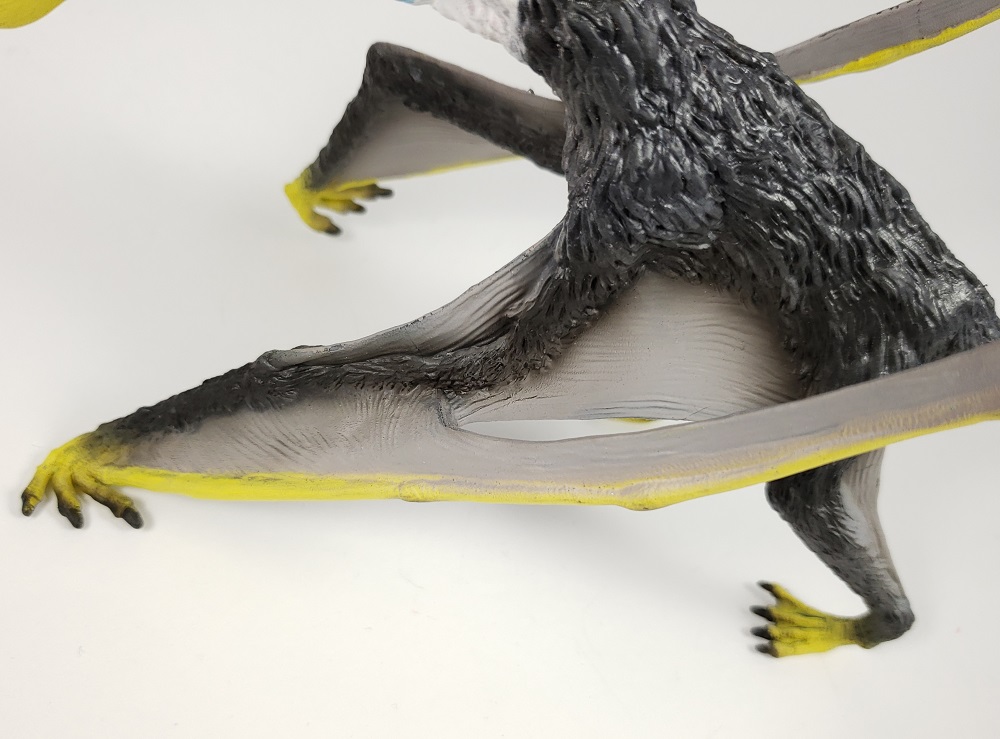
Although CollectA’s Supreme/Deluxe pterosaurs are nominally 1:4 scale, this figure is about 1:2 scale based on the dimensions of the largest skull fragment. For scale-conscious collectors and diorama makers, that means our options for figures to display them with are limited. For that reason, I would have personally preferred this figure be at something like 1:12 or 1:20. If you’re the type of collector for whom bigger is always better regardless of scale, this is the pterosaur for you. I’m still quite fond of it as a well-executed replica of a pterosaur that has never been made in plastic before, and I’d recommend it to collectors and to all but the youngest children. You can buy it at the usual online shops, or, if you’re lucky, at a good toy store in your city.
Disclaimer: links to Ebay and Amazon on the DinoToyBlog are affiliate links, so we make a small commission if you use them. Thanks for supporting us!




Superb review, especially with all the detail about wing anatomy. I hope we see a fourth such pterosaur in the future.
Lovely review. Great pics.
Wikipedia states “The largest individuals of Caiuajara had an estimated wingspan of 2.35 metres,” which, if correct, does make the model around 1/4 scale based on wing size, by my calculations, assuming this is a big one. (2.35 m x 39″/m = 93.21.” 93.21″/4 = 23.3.”)
Cheers.
Interesting. I’ve always found it difficult to estimate wingspans on pterosaur figures unless they’re sculpted with the wings spread, so I usually use rigid elements like skulls, mandibles, or crests. I’ll take your word on the wing measurements, but if they’re correct, that actually suggests a bigger problem: that the head is sculpted to a different scale than the wings.
Fortunately it is a great figure and in my case I do not care at all for the colors of the crest so criticized in the forum. I am very happy with my caiuajara.
Beautiful photographs.
Wonderful! This is really a beautifully executed figure with striking colors.
The size is impressive and really displays well with the others from the supreme line.